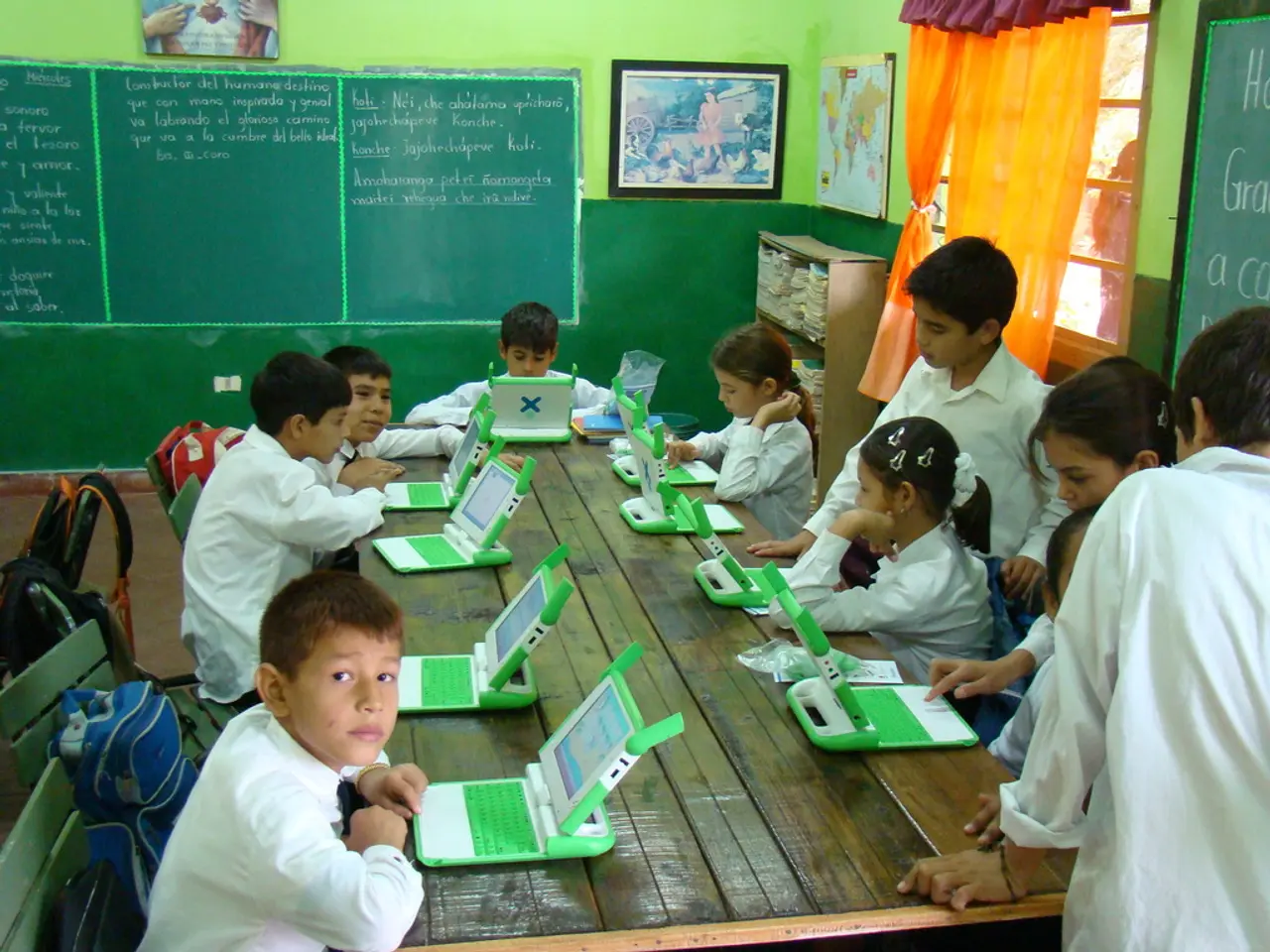Education Chasm in Digital Sphere and Economic Disparity
In the modern era of online learning, the digital education landscape presents both opportunities and challenges. While technology can bridge educational gaps, it also has the potential to deepen disparities, jeopardizing equality in learning opportunities [1]. To navigate this complex terrain, a collaborative approach involving individuals, policymakers, and educational institutions becomes imperative [2].
The key to addressing the Digital Education Divide lies in ensuring equitable digital opportunities for all. This principle underpins effective strategies aimed at narrowing the gap, such as providing reliable, individual access to devices and internet connectivity [3]. Programs that supply one-to-one devices to students, ensure campus and off-campus Wi-Fi, and provide mobile hotspots help level access across socio-economic and geographic lines [3].
Fostering digital literacy and ongoing technical support is another critical component. Training students, educators, and families on using technology effectively builds confidence and reduces skill gaps, enabling full participation in digital learning [1]. Accessible technical support keeps learning uninterrupted [1].
Supporting teachers with professional development is also essential. Grants aimed at improving educator capacity to integrate digital tools and to design inclusive learning experiences are critical; effective instruction with technology depends on teacher readiness [3].
Developing coherent national and regional digital education strategies is vital for sustainable digital transformation. Centralized policies with clear goals, funding, and evaluation mechanisms create frameworks for equitable learning environments [2]. However, successful implementation also requires alignment with local school capacities and resources [2].
Raising policymaker and community awareness is crucial in sustaining investments and advocacy efforts targeted at marginalized groups disproportionately affected by the digital divide [4]. Building understanding of how digital inclusion supports equity helps ensure continued support for initiatives that bridge the gap.
Addressing the multifaceted digital inequality beyond simple access is also essential. Strategies must consider dimensions such as usage skills, relevance of content, and socio-economic factors like income and education to narrow the digital divide's impact on broader social inequality [5].
Fostering a culture of inclusivity and diversity in the digital education sphere is crucial for promoting equitable opportunities for all individuals. Ensuring equitable access programs in underserved communities plays a crucial role in providing marginalized populations with the necessary tools to thrive in the digital age [6].
Initiatives focusing on providing devices, internet connectivity, and digital skills training are crucial in mitigating educational disparities. Persistent and inclusive initiatives are necessary to make substantial progress towards leveling the playing field [7].
In conclusion, the future implications of technology access on income equality may widen disparities in educational opportunities. However, through a collaborative and inclusive approach, we can create equitable learning environments that mitigate the cyclical reinforcement of income inequality through unequal educational opportunities in the digital age [1][2][4][5].
References:
[1] UNESCO. (2018). The Digital Education Landscape: Trends, Challenges and Opportunities. Retrieved from https://en.unesco.org/education/resources/digital-education-landscape-trends-challenges-and-opportunities
[2] European Commission. (2020). Digital Education Action Plan. Retrieved from https://ec.europa.eu/info/publications/digital-education-action-plan_en
[3] CoSN. (2020). Empowering Learning, Transforming Schools: Key Trends in Education Technology 2020. Retrieved from https://cosn.org/empoweringlearning/2020/
[4] World Economic Forum. (2019). Closing the Digital Divide: A Guide for Policymakers. Retrieved from https://www.weforum.org/reports/closing-the-digital-divide-a-guide-for-policymakers
[5] OECD. (2019). Going Digital: Transforming Education and Training Systems. Retrieved from https://www.oecd.org/education/going-digital-transforming-education-and-training-systems-9789264312672-en.htm
[6] UNICEF. (2019). The State of the World's Children 2019: Children, Food and Nutrition: Growing Well. Retrieved from https://www.unicef.org/reports/state-of-the-worlds-children-2019
[7] World Bank. (2020). Bridging the Digital Divide in Education. Retrieved from https://www.worldbank.org/en/topic/education/brief/bridging-the-digital-divide-in-education
Adult literacy programs can leverage e-learning platforms as a means to reach a broader audience. These technology-based tools can help bridge the digital divide in literacy education by offering flexible, easily accessible learning opportunities.
Tech-centered literacy programs, equipped with ongoing technical support and digital skills training, can empower individuals to navigate the complex digital landscape effectively, fostering equal participation in the digital world.




